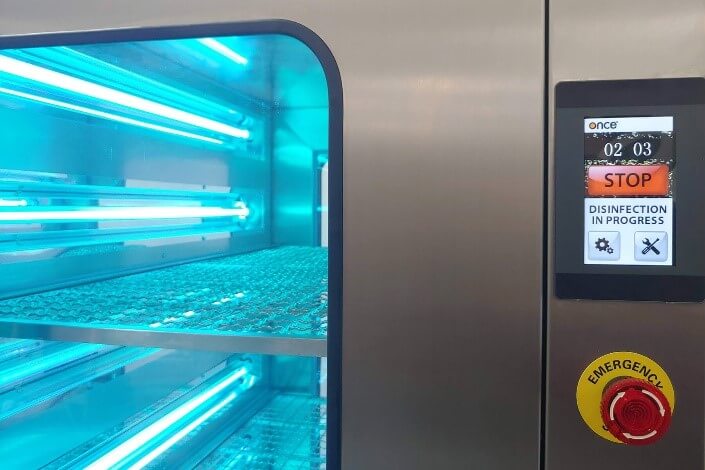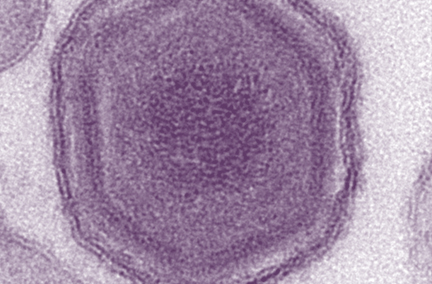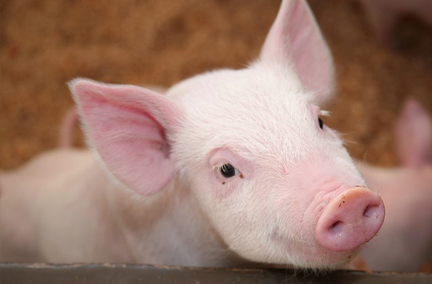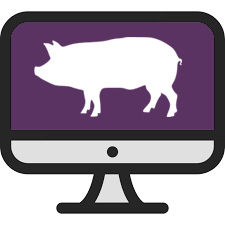
As the world deals with the COVID-19 pandemic, SHIC continues to focus efforts on prevention, preparedness, and response to novel and emerging swine disease for the benefit of US swine health. As a conduit of information and research, SHIC encourages sharing of its publications and research. Forward, reprint, and quote SHIC material freely. SHIC is funded by America’s pork producers to fulfill its mission to protect and enhance the health of the US swine herd. For more information, visit https://www.swinehealth.org or contact Dr. Sundberg at [email protected].

A Swine Health Information Center (SHIC)-funded working group report on ultraviolet light, a type of electromagnetic energy invisible to humans, provides guidance on how it can be used on farms to exclude pathogens from being introduced into a herd, a process known as bio-exclusion. When utilized and maintained properly, UVC light germicidal chambers can be an effective component of comprehensive biosecurity programs. However, proper construction and use of the chambers is necessary to obtain the full benefit UVC bio-exclusion. Ensure UVC lights are working properly to provide the intensity of light exposure or dose necessary to inactivate the micro-organism. Place items for maximum exposure in the chamber and time in a way the light can impact all surfaces of the items. In addition, safety should be a top priority when utilizing UVC chambers.The working group involved in this project examined UVC properties, related equipment, practices, and pathogens resulting in best practices for use of ultraviolet light for bio-exclusion on the farm.
Chambers, which may be commercial or homemade, are usually constructed so items to be disinfected are passed through from the dirty side (entry/hallway) to the clean side (office/break room). UVC germicidal chambers are mostly used for small to medium items like lunch boxes, cell phones, small tools, and medications. Food and semen bags can also be passed through the chamber without negative effects. Repeat exposure of plastics to UVC light may lead to a change in the color or smell of the object. Paper and cardboard cannot be disinfected in a UVC germicidal chamber. Larger UVC chambers, or UVC rooms, can be built for larger items.
The full report contains detailed information on the physics of UVC including wavelength details and how it inactivates pathogens. Information on dose calculations is incorporated along with specifics on measurement of UVC with a UV meter, factors affecting effectiveness, light system componenents, and a discussion of different light bulbs. In addition, detailed maintenance and safety requirements are included for optimum results using UVC in germicidal chambers. The report concludes with a section on best practices in the field as well as extensive tables and resources on inactivation results. A Fact Sheet on UVC use has been developed as well.
To start using UVC disinfection on the farm, follow these steps.
Step 1. Set Up UVC Germicidal Chamber and Choose UV Lamp
The UVC germicidal chamber is composed of four parts.
Step 2. Estimate the Necessary UVC Dose for Target Pathogens
Published information on UV dose is available only for porcine reproductive and respiratory syndrome virus (PRRSV), porcine epidemic diarrhea virus (PEDV), and foot-and-mouth disease virus (FMDV). For PRRSV and PEDV, studies showed the UVC dose required for a 3 log10 reduction was well below the range delivered by a commercially available chamber (150–190 mJ/cm2, BioShift® Pass-Through UV-C Chamber, OnceTM). For FMDV, the UVC dose required for a 5 log10 reduction was also below the range delivered by a commercially available chamber (150–190 mJ/cm2, BioShift® Pass-Through UV-C Chamber, OnceTM).
For other swine pathogens, UVC dose must be extrapolated from members of the same genus (bacteria) or family (virus). Most pathogens are inactivated at 190 mJ/cm2, but some require doses greater than 150 mJ/cm2. A significant gap in the literature exists for many swine pathogens.
Step 3. Use and Maintain the UVC Germicidal Chamber Properly
Follow these guidelines when using a UVC germicidal chamber on the farm. Remember, items to be disinfected must have direct exposure to UVC light.
Maintenance of a UVC germicidal chamber involves cleaning and monitoring. Follow these guidelines to maintain your chamber.
In addition, develop a checklist for farm personnel to ensure they know how to operate the chamber. Run time and UVC intensity should be recorded. Item placement within the chamber can be monitored through the window or via cell phone video from within. Regular audits are recommended.
Step 4. Train Staff on Safety Precautions
UVC light is mutagenic and carcinogenic; however, UVC germicidal chambers are safe when operated and maintained properly. Follow these recommendations to keep farm personnel safe.

In a statement released on October 26, 2020, the Food and Agriculture Organization of the United Nations (FAO) and World Organization for Animal Health (OIE) announced a joint initiative to keep African swine fever (ASF) at bay. The two global groups united in this effort, signaling the seriousness of the mission, as well as sincere desire to have all nations and partners join forces to combat ASF.
The announcement said, “The Global Control of ASF Initiative, recently launched under the GF-TADs umbrella, supports actors at every level to coordinate and strengthen control measures to minimize the impact of this complex and challenging disease.”
According to FAO and OIE, ASF continues to spread rapidly. In Asia, 7 million pigs have been lost due to ASF which impacts more than 50 countries in Africa, Asia and Europe. Where ASF has not be diagnosed, including the United States, efforts are focused on prevention.
The Swine Health Information Center (SHIC) has been working diligently with other US industry organizations, including the American Association of Swine Veterinarians, the National Pork Board and the National Pork Producers Council, since the ASF global outbreak began in August 2018 to fulfill its role to protect the health of the US swine herd. That includes working with these organizations on coordinating related research domestically and in Asia, monitoring global swine disease status and movement, as well as working with US Customers and Border Patrol to prioritize preventing transmission because of entry of illegally imported meat at airports and seaports. A page of the SHIC website is dedicated to AFS resources and information.
“Our goal is to prevent the spread – and ultimately eradicate – this disease, leveraging the latest science, best practices and international standards,” said FAO Director-General QU Dongyu in his video message to the participants. “If not controlled, this disease will jeopardize progress towards achieving the Sustainable Development Goals,” he continued calling on all stakeholders to take action to stop the spread of ASF, promote animal health and welfare, and safeguard the livelihoods of farmers.
“Today, no country is safe from African swine fever,” said OIE Director-General Monique Eloit. “The number of countries across the world reporting outbreaks to the OIE continues to grow. This corresponds to the biggest animal disease outbreak of our generation.” She stressed the need for continued investment in veterinary services, and the effective implementation of international standards, particularly those related to biosecurity and surveillance, to bring ASF under global control.
The FAO/OIE statement said the disease causes up to 100% fatality in wild and domestic pigs and there is no effective vaccine. ASF is not infectious to humans. However, the disease affects the food security and livelihoods of millions of people.
Read more about what FAO and OIE, under the GF-TADs framework, are doing to help countries curb the spread of ASF.
FAO and OIE work in partnership to tackle a range of animal diseases which threaten food security and livelihoods, find out more about their work on Peste des Petit Ruminants and Foot and Mouth Disease.

A project funded by the Swine Health Information Center (SHIC) will develop understanding of the prevalence and phylogenetic relationships of porcine parvovirus (PPV) infections in swine farms. In addition, researchers at South Dakota State University will explore the role PPV2 infection plays in important diseases such as pneumonia, immune deficiency, reproductive failure, and lameness, all causes of concern and lost productivity for pork producers. Other specific project objectives include development of research and diagnostic assays, including in situ hybridization and real-time PCR, for the detection, identification, and differentiation of PPV1 and PPV2. SHIC’s mission to protect the health of the US swine herd includes funding of this project, enabling work no one else is doing in the industry, then sharing the insights gained to benefit all.
During the project, researchers will ask what the current condition of PPV2 is on pig farms. They know, through evolution, new genetic and antigenic variants of parvovirus have arisen and occasionally achieve high frequency throughout the world. For example, a highly pathogenic canine parvovirus 2a recently emerged in dogs. This virus has gradually replaced the prototype of canine parvovirus as the predominant strain since 2010. In pigs, a new type of PPV2 was first detected in the US in 2013 with 20.7% and 7.6% prevalence in lung and fecal samples, respectively. Since 2013, five additional species of PPV have been discovered, with PPV7 recently identified in the US, Europe, and China. Surveillance of PPV infections in the US is rather limited. Several recent published studies have suggested a clinically significant role for PPV2, however, these results are limited in scope.
PPV1 is a well-known pathogen that can cause swine reproductive failure. It also frequently co-infects with other bacterial and viral pathogens in diseases such as porcine respiratory disease complex (PRDC) and postweaning multisystemic wasting syndrome (PMWS). To date, the knowledge of PPV2, particularly its pathogenicity, is rather limited. Different from a co-infective agent, it was recently noted PPV2 was the sole causative agent of pneumonia in a gilt, in which other pathogens were ruled out by metagenomic sequencing. With the awareness of PPV2, researchers further detected a high titer of PPV and PCV2 co-infection by real-time PCR in a finishing pig (230 pounds) showing sudden death in a South Dakota farm. With the coming of winter and spring, it is expected PPV2 may play a significant role in pneumonia, abortion, and other disorders (perivasculitis, lameness, and sudden death).
With answers to the questions posed by researchers for this project, valuable information will be made available to pork producers and swine practitioners to help understand the etiological significance of this virus, helping to prevent production losses.

Lameness and arthritis management were the subject of a webinar sponsored by the Swine Health Information Center (SHIC) and American Association of Swine Veterinarians (AASV) on October 13, 2020. Video and audio recordings of the webinar are available here. Dr. Kathleen Wood, Christensen Farms, in her presentation said, in her experience, lameness is the number one cause of mortality in mid to late finishing stage pigs. Understanding the causes, costs, and methods of managing can help address consequences of lameness and arthritis. Dr. Wood was joined by nutritionist Dr. Paul Cline, Christensen Farms, practitioner Dr. Michael Eisenmenger, Swine Vet Center, and diagnosticians Dr. Michael Rahe, Iowa State University (ISU) and Dr. Stephanie Rossow, University of Minnesota. The latest in a series of webinars addressing swine industry chatter, this event provided participants’ experience, recommendations, and direction for addressing these issues which have been on the rise, per submissions to veterinary diagnostic labs (VDLs). The webinar was conducted by ISU’s Swine Medicine Education Center.
Drs. Eisenmenger and Wood said solving the issue of lameness requires veterinarians to be in barns, observing animals, as well as performing necropsies to define the cause of lameness. Dr. Eisenmenger recommended combining resources to examine flow, health, nutrition, and operations as causes of lameness and working together to identify issues. The best chance for success, he advised, is to work in a manner that increases the opportunity for answers when working with VDLs.
During her presentation, Dr. Wood said she had farms where 10 to 25% stiffness in grow-finish pigs grew to 25 to 40% this year. She attributes the increase to a variety of factors including infectious arthritis, injury or trauma, as well as leg conformation problems or defects. Additionally, she attributes some of the increase in incidence to increased awareness of stiffness after a return to closer observation as barn visits resumed after a lag due to the COVID-19 pandemic.
Dr. Wood believes anti-inflammatory injectables are an important treatment, relieving pain and related issues. However, their use is variable and may be difficult to manage with potential issues revolving around withdrawal times for grow-finish pigs. She also recommends looking upstream for possible origin of stiffness/lameness problems including sow nutrition, sow farm medications, and pre-farrow vaccinations.
Critical to management is field communication. Dr. Wood believes continual training of staff to recognize and properly identify issues is essential, working from the premise lameness and stiffness are not part of “normal.” She also recommends more practitioner field time, necropsies, and pursuing diagnostics. In fact, she said, “Necropsy everything.” including popping open joints, snapping ribs, and identifying broken bones during routine necropsies versus only in infection/abscess presence.
Dr. Wood’s colleague at Christensen Farms, Dr. Paul Cline, shared a nutritionist’s perspective during the webinar. He said the industry needs to do better at understanding the interactions between health and nutrition. One of the ways to deal with that is to nurture the agreement that veterinarians and nutritionists are working toward the same goal. He also believes a more robust standard reference resource for bone characteristics is necessary.
Dr. Cline talked about how the consequences of an out-of-feed event aren’t truly understood in terms of how quickly bone ash changes. Another area in need of examination involves components that need to be measured to understand impact on bone. This includes boron levels in feed, impact of intake level on bone development, as well as seasonality.
For getting the best results when seeking results from submissions to VDLs, Dr. Michael Rahe of the ISU Veterinary Diagnostic Lab, offered these best practices:
• Submitters can call VDL ahead of time and discuss what is seen in impacted pigs and what tissues would be helpful to submit
• Live pigs or limbs can be submitted
• Tissues to submit for lameness workup
o Evaluate joints to rule out infectious arthritis or submit limbs.
o Serum – Vitamin D (collect antemortem or shortly after euthanasia)
o Second ribs – (bone ash and density)
o Fixed long rib(s) – 10th ribs (microscopic evaluation of physis (growth plate) and trabecular and cortical bone)
o Fixed skeletal muscle from hamstrings, triceps, and diaphragm
o Fresh and fixed liver (Vitamin E and trace mineral panel)
o Urine (calcium and phosphorus)
o Fresh and fixed lung, kidney, spleen, and brain to rule out systemic disease, meningitis, encephalitis, etc.
Dr. Rahe said acutely affected pigs are better than chronic pigs for sample submission and agent isolation. Sampled pigs should represent what is being observed in the herd. He also emphasized that findings/diagnosis in one pig could be an isolated case and not necessarily representative of the herd. Correspondingly, the same finding in multiple animals then adds confidence in a herd level diagnosis.
Dr. Stephanie Rossow of the University of Minnesota VDL began her presentation by emphasizing that tissue structure of the pig is directly tied to tissue function, so addressing bone structure in lameness concerns is essential. She said abnormal structure equals abnormal function with related consequences affecting pig health and performance. Understanding of disease initiators versus promoters also helps develop effective prevention and treatment protocols. Dr. Rossow emphasized the importance of using a diagnostic lab, saying VDLs have the people, time, and tools for extensive investigation. Dr. Rossow shared many images from VDL investigation of lameness, describing the process and results of their work.
Previous webinars in this series have covered viral myelitis, tracheitis, and coccidiosis. Ideas for future webinars are welcome. Please submit to SHIC Executive Director Dr. Paul Sundberg at [email protected].

The Swine Health Information Center (SHIC) and American Association of Swine Veterinarians (AASV) jointly sponsor a webinar series on swine health “industry chatter” topics. With almost all industry meetings either canceled or gone virtual, the opportunity to talk in person with colleagues about issues affecting health has diminished greatly. So having a new opportunity for conversation is helpful. The next webinar, topic to be determined, is scheduled for December 10, 2020, at 10:00 am CST. SHIC and AASV would like your input on what topic to address!
Are you seeing new occurrences of “old” diseases that are difficult to manage? Are there challenging diagnoses or syndromes in pigs you’re seeing? Do you need more information and points of view related to on-going health issues in your barns?
These webinars bring together subject matter experts to discuss current issues facing US pork producers and practitioners. Past topics have included viral myelitis, tracheitis, coccidiosis, and lameness/arthritis. Conducted by the Iowa State University Swine Medicine Education Center (SMEC), webinar participants include practitioners with first-hand experience with the topic being discussed, diagnosticians, and other experts. Completed webinars are posted online for convenient access here.
Reach out to SHIC Executive Director Dr. Paul Sundberg at [email protected] or AASV Director of Public Health and Communications Dr. Abbey Canon at [email protected] with your webinar recommendations.
In addition to the webinars, SHIC also takes a further look at the issues with the SHIC Talk Podcast. Here webinar participants discuss the topic conversationally in an audio-only format.
Thank you for sharing your recommendations for upcoming industry chatter webinars!
As the world deals with the COVID-19 pandemic, SHIC continues to focus efforts on prevention, preparedness, and response to novel
and emerging swine disease for the benefit of US swine health.

This month’s Domestic Swine Disease Monitoring Report shows a similar overall case positivity for porcine reproductive and respiratory syndrome virus (PRRSV), porcine epidemic diarrhea virus (PEDV), and porcine deltacoronavirus (PDCoV) cases in August compared to July. Detection for these agents was within expected parameters for this time of the year. Overall, Mycoplasma hyopneumoniae is following an expected trend of increased detection. At the state level, detection of PRRSV was three standard deviations above expected in Missouri (MO). In the podcast, the SDRS hosts talk with Dr. Derald Holtkamp about strategies to keep disease activity low. They also discuss the economics of disease management and the value of year around biosecurity practices.

The November 2020 Global Swine Disease Monitoring Report includes information on the first case of African swine fever (ASF) reported in the Saxony region of Germany. As a result, a new third restriction zone in the state, which is bordered by Brandenburg to the south, has been established. In South Korea, new ASF outbreaks in domestic pigs almost a year after the last report were discovered. ASF was detected in Russian pork products in several regions of that country. Porcine reproductive and respiratory syndrome virus (PRRSV) is an emergent issue in Russia with authorities there updating preventive and control guidelines.
Copyright 2025 | Swinehealth.org | Website by Heartland Marketing Group